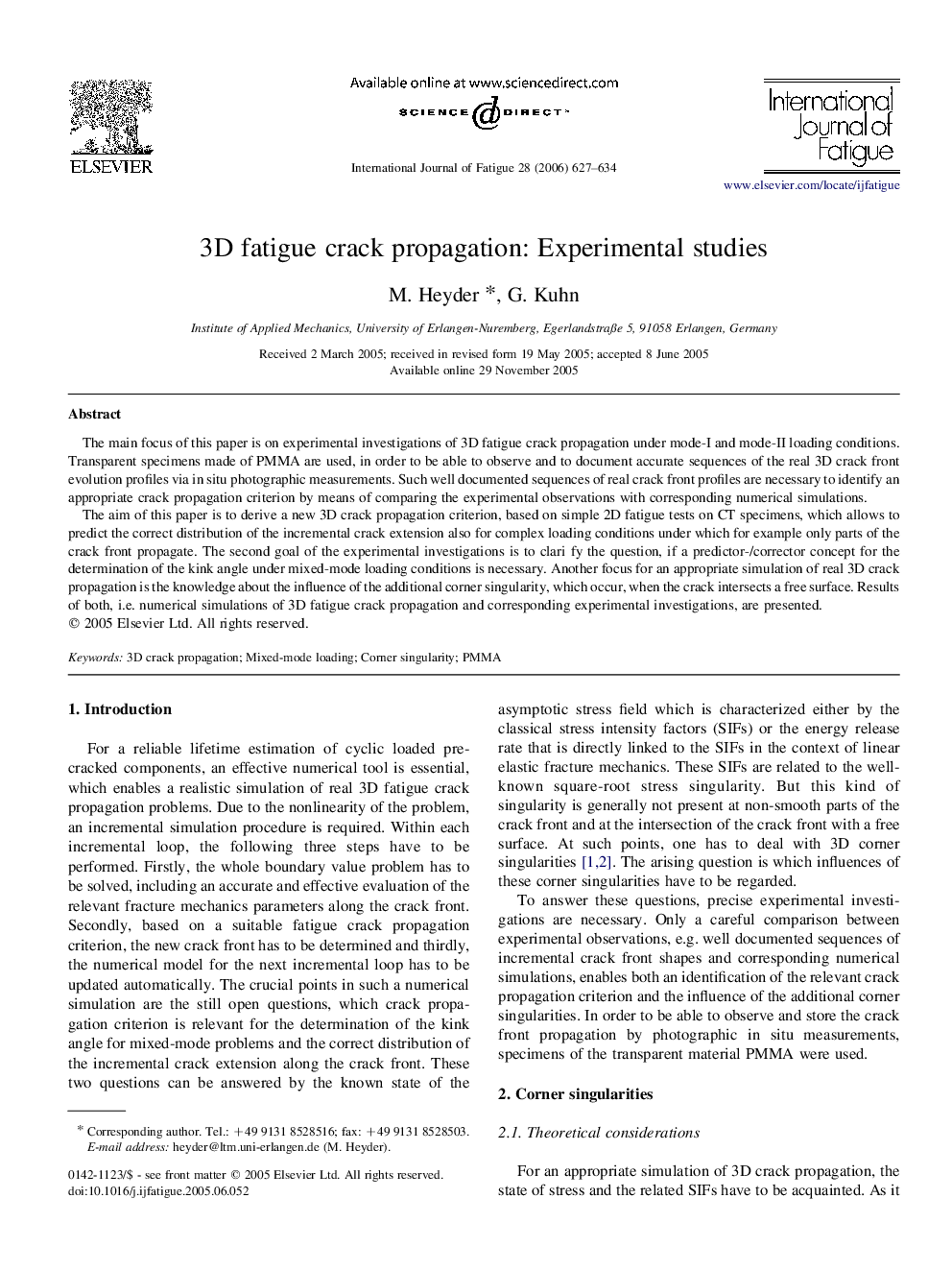| Article ID | Journal | Published Year | Pages | File Type |
|---|---|---|---|---|
| 781825 | International Journal of Fatigue | 2006 | 8 Pages |
The main focus of this paper is on experimental investigations of 3D fatigue crack propagation under mode-I and mode-II loading conditions. Transparent specimens made of PMMA are used, in order to be able to observe and to document accurate sequences of the real 3D crack front evolution profiles via in situ photographic measurements. Such well documented sequences of real crack front profiles are necessary to identify an appropriate crack propagation criterion by means of comparing the experimental observations with corresponding numerical simulations.The aim of this paper is to derive a new 3D crack propagation criterion, based on simple 2D fatigue tests on CT specimens, which allows to predict the correct distribution of the incremental crack extension also for complex loading conditions under which for example only parts of the crack front propagate. The second goal of the experimental investigations is to clari fy the question, if a predictor-/corrector concept for the determination of the kink angle under mixed-mode loading conditions is necessary. Another focus for an appropriate simulation of real 3D crack propagation is the knowledge about the influence of the additional corner singularity, which occur, when the crack intersects a free surface. Results of both, i.e. numerical simulations of 3D fatigue crack propagation and corresponding experimental investigations, are presented.
